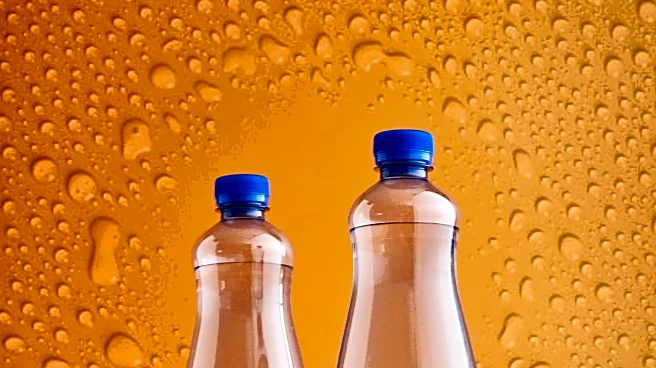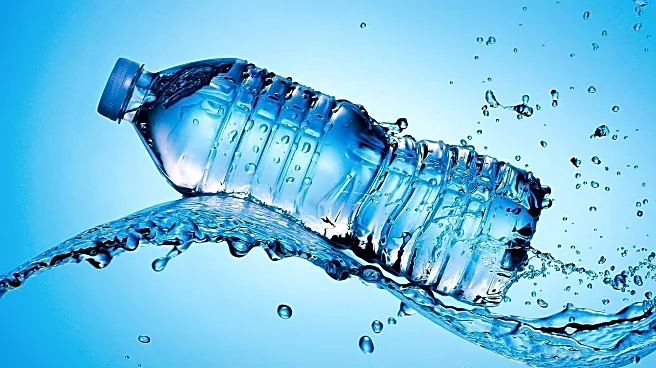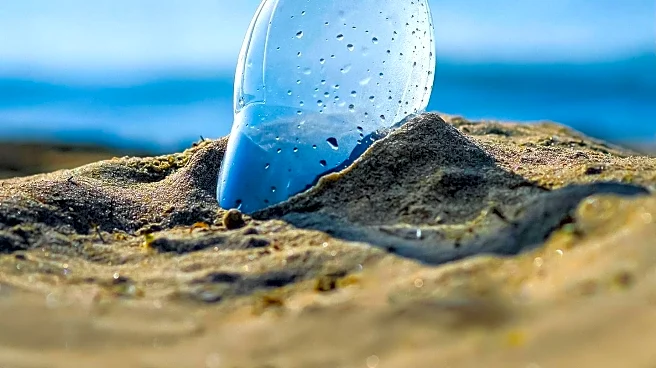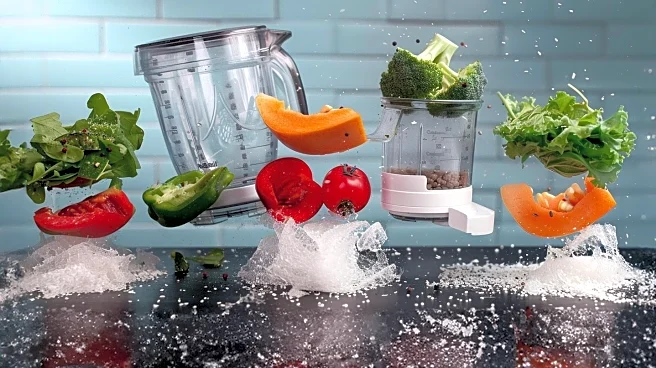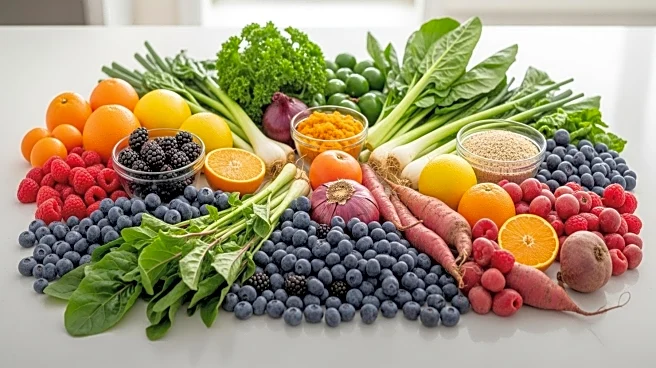What is the story about?
What's Happening?
Microplastics have been detected in various common foods, raising concerns about their impact on human health. Studies have shown that microplastics can accumulate in the circulatory system and organs, potentially causing inflammation and tissue damage. Foods such as seafood, rice, salt, sugar, and bottled water are among the most common sources of microplastics. The contamination often occurs through environmental exposure and the use of plastic packaging and utensils. Despite the lack of established safe levels of microplastic intake, experts recommend minimizing exposure by choosing alternatives like glass or cardboard packaging and avoiding plastic kitchen utensils.
Why It's Important?
The presence of microplastics in food highlights a growing environmental and health issue. Microplastics can absorb other environmental toxins, introducing them into the body and potentially causing hormonal imbalances. This issue is significant for public health, as it affects a wide range of food products consumed daily. The findings call for increased awareness and changes in consumer habits to reduce exposure, as well as potential regulatory actions to address the sources of microplastic contamination.
What's Next?
Further research is needed to understand the long-term health effects of microplastic ingestion. There may be increased pressure on food producers and packaging companies to adopt more sustainable practices. Consumers are likely to seek out products with reduced plastic content, driving market demand for eco-friendly alternatives.
Beyond the Headlines
The issue of microplastics in food reflects broader environmental challenges related to plastic pollution. It underscores the need for systemic changes in production and consumption patterns to address the root causes of plastic contamination. This could lead to innovations in packaging and agricultural practices aimed at reducing plastic use.
AI Generated Content
Do you find this article useful?





